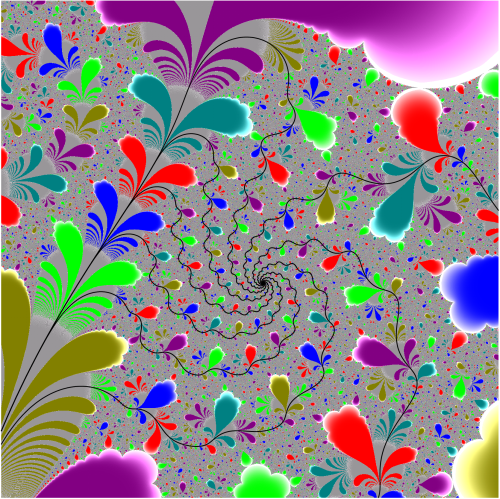This article may need to be rewritten to comply with Wikipedia's quality standards.(December 2021) |
An external ray is a curve that runs from infinity toward a Julia or Mandelbrot set. [1] Although this curve is only rarely a half-line (ray) it is called a ray because it is an image of a ray.
Contents
- History
- Types
- plane
- bifurcation
- stretching
- landing
- Maps
- Polynomials
- Transcendental maps
- Images
- Dynamic rays
- Parameter rays
- Programs that can draw external rays
- See also
- References
- External links
External rays are used in complex analysis, particularly in complex dynamics and geometric function theory.











































































